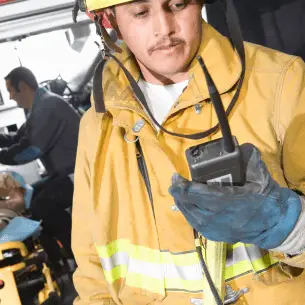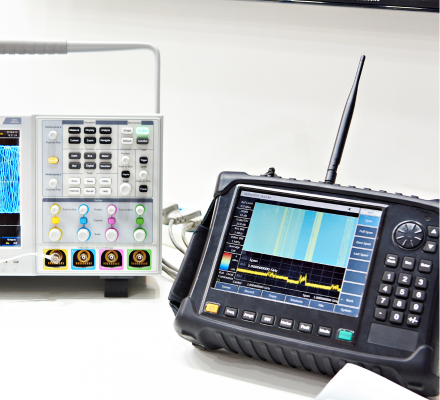The NFPA 1221 standard provides specific requirements for Emergency Responder Radio Coverage (ERRC) systems. Here is a summary of some of the key requirements typically found in the standard:

- Coverage: The ERRC system must provide radio coverage throughout the building or facility, with specific coverage criteria defined for critical areas such as command centers, fire pump rooms, exit stairs, and exit passageways.
- Signal Strength: The standard specifies minimum signal strength requirements for both inbound and outbound signals to ensure clear and reliable communication for emergency responders.
- System Components: The ERRC system should include components such as repeaters, amplifiers, antennas, and battery backup systems. These components must meet specified performance and quality standards.
- Testing and Commissioning: Upon installation, the ERRC system must be tested to verify that it meets the coverage and signal strength requirements. Periodic testing is also required to ensure ongoing compliance.
- Maintenance: The standard outlines maintenance requirements for the ERRC system to ensure its continued reliability and effectiveness.
- Approval: The design and installation of the ERRC system must be approved by the local authority having jurisdiction (AHJ), and any changes or modifications to the system must also be approved.
- Documentation: Detailed documentation of the ERRC system, including design plans, component specifications, and testing results, must be maintained and available for inspection.
It’s important to consult the specific edition of NFPA 1221 that is adopted by your local jurisdiction to understand the exact requirements that apply to your situation. Additionally, local amendments or additional requirements may also be in effect.
What Equipment that Maximizes Emergency Responder Radio Coverage?
Bi-Directional Amplifiers (BDAs) play a critical role in ensuring effective emergency communication within buildings and structures. They are designed to enhance radio frequency (RF) signals, allowing for improved coverage and penetration through obstructions. This is particularly important in large facilities such as office buildings, tunnels, and stadiums, where reliable communication is essential for public safety.
BDAs function by capturing weak RF signals through an external donor antenna, amplifying these signals, and then redistributing the strengthened signals internally. This process ensures that first responders and emergency personnel can maintain clear and uninterrupted communication throughout the entire facility, even in areas that might otherwise experience signal degradation.
The key components of a BDA system include:

- Donor Antenna: Captures external RF signals.
- Amplifiers: Boosts the strength of the signals.
- Filters: Removes interference to improve signal quality.
- Internal Antennas: Distributes the enhanced signals within the building.
- Power Supplies: Ensures consistent operation of the system.
The implementation of BDAs is essential for meeting Emergency Responder Radio Coverage (ERRC) requirements, as outlined by standards such as NFPA 1221. By eliminating communication dead zones and ensuring extensive coverage, BDAs enhance the ability of emergency responders to coordinate effectively during emergencies, thereby improving public safety and operational efficiency.
To learn more about how BDAs can help businesses meet EERC requirements, you can visit the following link: Learn more about BDAs and ERRC.
Do I need a BDA? How do I know if I need one?

To determine whether you need a Bi-Directional Amplifier (BDA) for your building, it’s essential to conduct a comprehensive signal strength assessment. This process involves hiring a local certified tester who specializes in emergency communication systems. These professionals utilize specialized equipment to measure the existing radio frequency (RF) signal strength throughout your building.

During the assessment, the tester will identify any areas with weak or insufficient signal coverage, known as “dead zones.” These are areas where emergency responders might face communication challenges during an emergency. The assessment will take into account the unique layout, materials, and other factors specific to your building that could affect signal propagation.
Based on the results of this assessment, the certified tester can design a customized BDA solution tailored to your building’s needs. This solution will aim to eliminate dead zones and ensure that reliable communication coverage is provided throughout the entire facility, meeting the requirements of Emergency Responder Radio Coverage (ERRC) standards such as NFPA 1221.
By conducting this testing and implementing a BDA system if necessary, you can enhance the safety and preparedness of your building in the event of an emergency.
Contact Elyon for Your BDA Testing and Certification
Ensure the safety and compliance of your building with Elyon’s comprehensive BDA testing and certification services. Our team of certified professionals uses state-of-the-art equipment to conduct thorough signal strength assessments, identifying any dead zones and designing customized solutions to meet your specific needs. Trust Elyon to provide the expertise and support necessary to enhance emergency communication and meet ERRC requirements. Don’t leave safety to chance – contact Elyon today for your BDA testing and certification needs!


